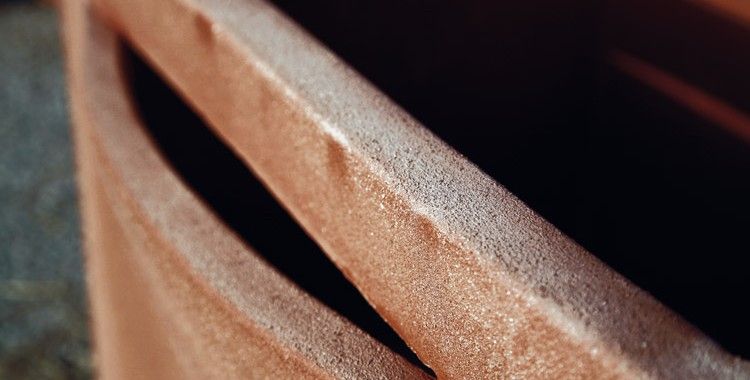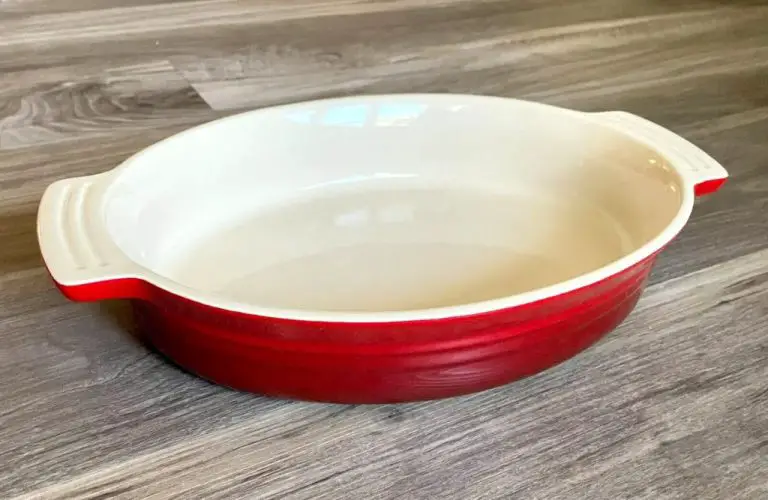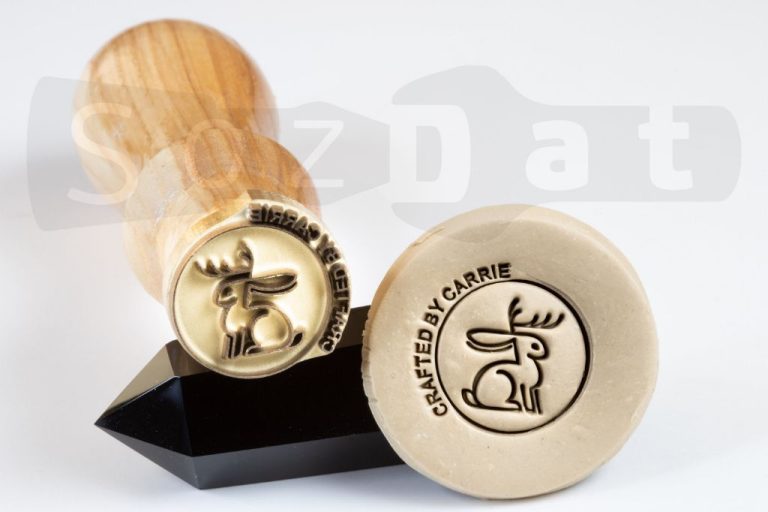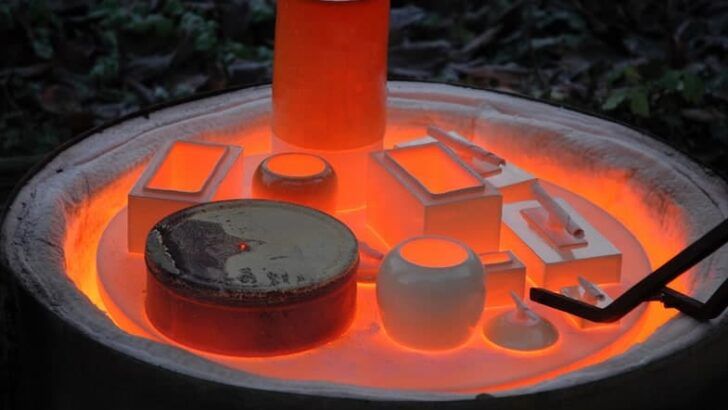How Did The Pueblo Make Their Pottery?
Pueblo pottery has a long and rich history stretching back over 2,000 years. For the Pueblo peoples, including the Hopi, Zuni, Acoma and other tribes, pottery played an integral role in their culture and daily life. Elegantly painted pots, bowls, jars and other vessels were used for food preparation, storage, and ceremonial purposes. The beautiful designs incorporated elements from nature and Pueblo cosmology.
Pueblo pottery remains an important Native American art form today. Modern Pueblo artists continue to hand-build and paint pottery using ancient techniques passed down through generations. Their striking pottery preserves tribal heritage while also incorporating new styles and innovations.
In this article, we will explore the time-honored process behind creating traditional Pueblo pottery, from gathering clay and forming vessels to painting and firing them. We will gain insight into the cultural significance of each step of the process and how Pueblo pottery serves as a connection to history and identity.
Clay Gathering
The Pueblo gathered clay for their pottery from specific sites near their villages. Women were tasked with locating good clay sources and extracting the clay. They looked for pure clay deposits along the banks of rivers, streams, and lakes, as well as under overhangs in the cliffs. Good clay was identified by its fine texture and lack of pebbles, roots, or other debris.
The Pueblo used several tools to dig and extract the clay. Wooden digging sticks, made from branches or saplings, were used to break up the surface clay deposits. Women used sturdy baskets to carry large clay lumps back to the village. Sharp stones or pottery shards were employed to peel off layers of poor surface clay to reach the good clay underneath. The clay was then broken up and kneaded to remove any remaining pebbles or debris before transporting it to be prepared for pottery making.
Clay Preparation
After gathering clay from specific sites, the Pueblo would begin processing and purifying it. This was an essential step, as high quality clay with a smooth, workable texture was vital for crafting fine pottery.
The women tasked with preparing the clay would first break up clay chunks and remove any large impurities like rocks or organic material. The clay would then be soaked in water to achieve an even moisture content. Next, the clay would be kneaded and wedged, a process of folding and pressing the clay to force out air pockets and evenly distribute moisture. This kneading and wedging resulted in a smooth, plastic texture ideal for shaping pottery.
If any gritty particles remained in the clay after wedging, the women would pour the clay slip through a screen or cloth to further filter and purify it. Removing impurities helped prevent cracking or weak spots while drying and firing. Achieving a perfectly smooth, flexible clay was crucial for the Pueblo potters before they began carefully forming and decorating their renowned pots.
Forming the Pottery
The Pueblo Indians shaped their pottery vessels using different hand-forming techniques as well as the pottery wheel. Hand-forming methods involved molding the clay into shapes using only their hands, paddles and anvils. Common hand-forming techniques included:
- Pinch pots – Forming the vessel by pinching and pulling the clay into shape
- Coil building – Rolling out coils or ropes of clay and stacking them to build up the vessel walls
- Slab building – Flattening slabs of clay and joining them together to form the shape
The pottery wheel was introduced later and allowed the Pueblo to make smoother, more symmetrical vessel shapes. Typical vessels produced included jars, bowls, pitchers, canteens, plates and effigy pots shaped like animals or people.
Decorating
The Pueblo people were masters at decorating their pottery in beautiful and intricate ways. Some of the most common decorative techniques included painting, incising, and sculpting intricate designs into the clay.
Painting was perhaps the most prevalent decoration method used by the Pueblo. They used natural pigments made from minerals, plants, and clays to create vibrant colors on the pottery. Common colors included black, white, red, yellow, and orange. The paintbrushes were handmade from yucca leaves, animal hair, and feathers. Painted designs included geometric patterns, animals, birds, insects, and floral motifs.
Incising involves carving or etching lines and patterns into the clay with sharp tools. The Pueblo used objects like sticks, stones, bones, and corn cobs to incise fine line designs. When fired, these carved lines filled with black from smoke, making the patterns more visible. Incising created striking geometric patterns, symbol designs, and graphic imagery on pottery.
Sculpting is the technique of molding wet clay into three-dimensional figures and shapes. Pueblo artists would sculpt figures of animals, spiritual beings, and shapes to adorn their pots. Applied sculptures like horned lizards, parrot heads, and feather designs gave their pottery distinct character. The sculpted elements projected naturally from the pot’s surface.
Drying
After the pottery pieces were formed, Pueblo artists needed to carefully dry them before firing. If wet clay dries too quickly, it can easily crack or warp. The Pueblo had two main methods of drying their pottery:
Controlled Indoor Drying: One method was to dry pottery slowly indoors, out of direct sunlight. Pieces would be placed on flat surfaces inside pit-houses, out of drafts. The constant indoor temperature slowed the drying process, preventing cracks. Large or complex pieces were often dried this way over several weeks.
Outdoor Drying: Simple, smaller pieces could be dried outside, but even then, steps were taken to control drying. Pieces were placed in shaded areas and covered with cloths or brush to shield from sun and wind. Pottery was turned periodically so it did not dry unevenly. Careful monitoring ensured the clay did not dry too rapidly outside.
The Pueblo understanding of their local climate and how to prevent cracking led to innovations in controlled, intentional drying of pottery before firing.
Firing
Firing was a crucial step in hardening and waterproofing the Pueblo pottery. The Pueblo people developed specialized outdoor firing methods to achieve the high temperatures needed to properly fire the clay. Large communal kilns were built from adobe bricks, stone slabs, or even pits dug into the ground and lined with heat-resistant materials.
Wood was the primary fuel used for firing. Piñon and juniper trees provided an excellent source of dry firewood that burned long and hot. The pottery vessels were carefully stacked inside the kiln, leaving space for the heat and flames to circulate evenly around each piece.
Firing took many hours, sometimes up to a day or more of continually stoking the fire. Experienced Pueblo kiln masters knew how to control the air flow and regulate the temperature. They looked for visual cues like the color of the fire and the glow of the pottery to determine when the ideal hardness and finish was reached.
Outdoor firing allowed large quantities of pottery to be fired at once but was risky. Wind or rain could disrupt the firing before completion, ruining hours of hard work. When the firing was successful, the Pueblo emerged with sturdy, finished pottery ready for painting and polishing.
Polishing
After firing, Pueblo potters would polish and refine the surface of the finished pottery pieces through burnishing and rubbing. Burnishing is a technique where the pottery surface is polished through friction by rubbing it with a smooth object. Among the traditional Pueblo peoples, a common burnishing tool was a pebble or stone. The potter would rub the pebble repeatedly over the surface of the fired clay vessel, polishing it to a smooth, glassy finish.
In addition to burnishing, Pueblo potters would also polish and finish the pottery using their hands. The natural oils from the potter’s hands helped create a shiny surface as they rubbed the vessel. Along with smoothing and shining the surface, polishing helped further seal and strengthen the clay. It made the pottery less porous and less prone to cracking. The polishing and burnishing process took time and effort but resulted in very finely polished ceramic wares that were beautiful as well as functional.
Painting
The Pueblo coated their pottery with paints made from natural mineral and plant pigments. These paints added beautiful colors and designs to the pottery. The most common mineral pigments were red ochre for red, manganese for black, and copper carbonate for green and blue. To make the paint, the minerals were ground into a fine powder and mixed with water.
The Pueblo also made paintbrushes from the fibers of yucca plants. The stiff yucca fibers were dried and tied together to form small brushes. These natural brushes allowed the Pueblo to carefully apply designs to their pottery.
Common designs included geometric patterns like lines, triangles, dots, and spirals in various colors. The patterns were meaningful to the Pueblo, often representing elements of nature, animals, or spiritual concepts. The paint added a beautiful finishing touch to bring the pottery to life.
Conclusion
The Pueblo people have an ancient and rich tradition of making pottery that has lasted for centuries. Their distinctive style of pottery making, from the gathering of clay to the polishing and painting of the finished piece, reflects their deep connection to the land and environment. While styles and techniques have evolved over time, pottery remains an integral part of Pueblo culture and everyday life.
The painstaking process of hand-forming vessels out of raw clay and decorating them with natural paints represents an unbroken chain of knowledge passed down through countless generations. Pueblo pottery contains not only artistic beauty but also the history, stories, and values of the Pueblo people. Each unique piece connects the present to the rich cultural past. The persistence of their pottery making over hundreds of years is a testament to the Pueblos’ deep cultural identity and remarkable ability to preserve their traditions despite outside influences. For the Pueblo people, pottery is, and will continue to be, an essential and meaningful part of their heritage.





